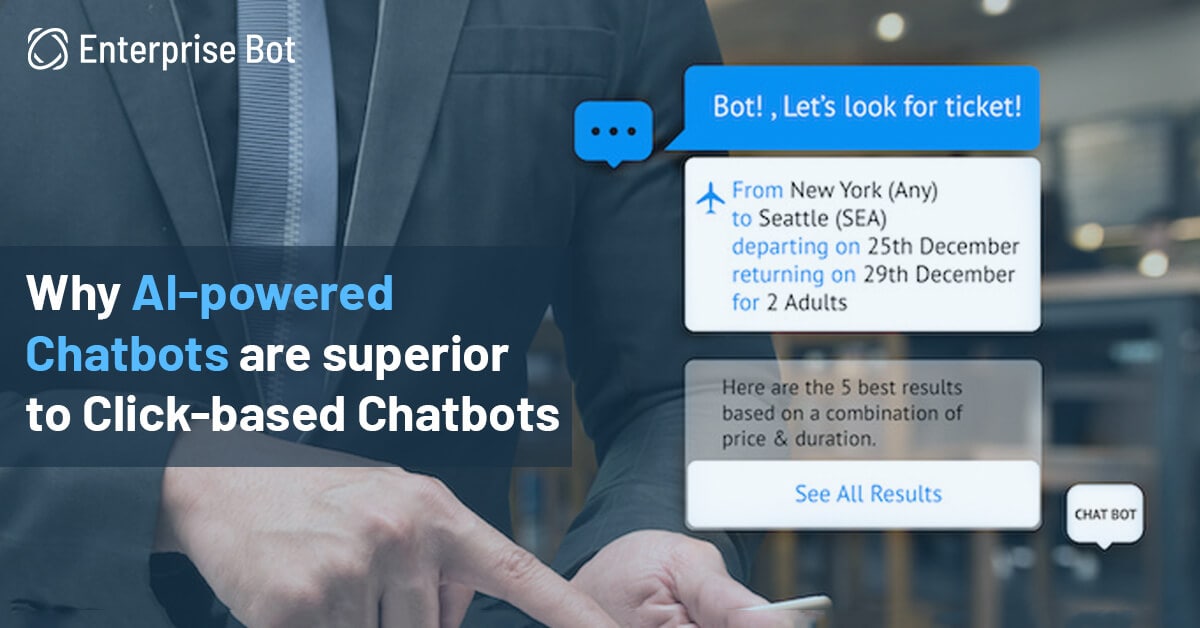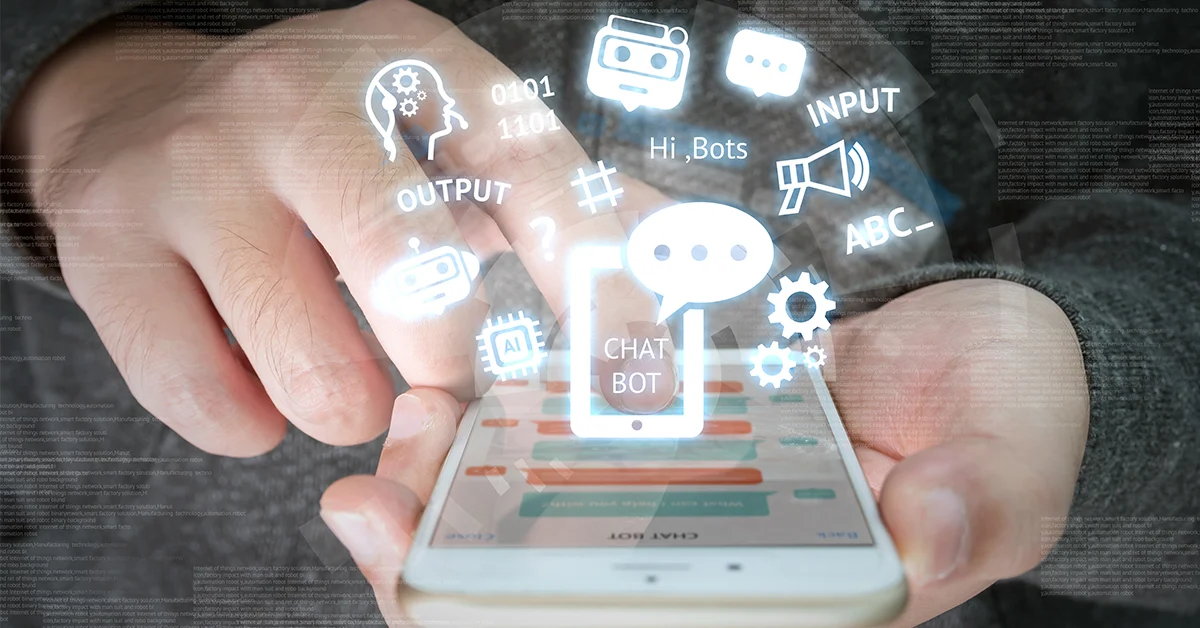Pros and Cons of Rule Based & AI for Chatbots

Chatbots often fail to meet business goals. An effective conversational platform strategy will be your key enabler in deploying the right solution for employees, customers, key stakeholders.
The term chatbot doesn’t intrigue today as much as it did a decade ago.
Chatbots are digital interaction tools that can provide customer service, improve efficiency, and expand reach. Depending on the complexity of the tasks you need your chatbot to perform, you have a choice between rule-based or AI-powered bots. In this guide we'll explain the difference between these two types of chatbots and their respective pros and cons.
Today, businesses worldwide, spanning industries like retail, delivery, consulting, banking, finance, booking, tourism, and job search, use chatbots to improve the speed and accuracy of their customer interaction. Chatbots are empowering, helping businesses, small and large, with increasing efficiency, saving money, while also enabling a seamless customer experience, 24/7 and across platforms.
But there are different kinds of chatbots, each with their own set of benefits, limitations, and applications.
Define Your End Goal: What Experiences Will You Offer?
Before deciding between a rule-based or AI-powered chatbot, it's important to define the goals of using a chatbot on your website. Consider what experiences the chatbot will be providing such as customer service, lead generation, personalized recommendations and so on. With clear goals in mind, you can choose the best type of bot for your needs.
What Gives AI Chatbot an Edge over Click Chatbot?
While Click chatbots too can be extremely convenient and time-saving for millions of users, they lack critical understanding and flexibility. These chatbots can only automate very specific situations that they have learned, are likely to arise, such as looking up order status, refund status, or product or services catalog. They function on pre-programmed keywords or U/X features or suggested responses to take the conversation forward. That doesn’t leave much room for natural, human-like conversation.
Even variations of a specific question must have been pre-programmed for the chatbot to accurately understand a customer’s demand. For example, if a bot only understands, “Where’s my order?” while the customer happens to ask, “Is my package arriving today?”, the bot will fail to properly map the order status related query to its training database and will not be able to provide the desired customer support.
Think of the times you have called customer support. Click bots are like the robotic voices telling you to press 1 or 5 or another number and then giving you another menu and then another one. These are the experiences that frustrate consumers. Don’t get me wrong, click bots can be great, if, for example, you want a bot that only does password reset and nothing else, or if you want to give your clients 3-4 options but for something more sophisticated we would strongly recommend to leverage an AI bot.
Limiting the interaction to just button clicks will have a negative effect on your user experience.
Based on our research, users are highly unlikely to follow a linear path while engaging with a business. The lack of technology that allows free-form communication could plummet engagement and retention, especially in complex cases spanning banking, insurance, and telecom industries. An individual could say just about anything that might not necessarily be preempted by the Click bot.
It’s the evolution of human-bot interaction.
AI chatbots do not bombard the customer with any predefined set of keyword-powered buttons to capture them in an endless and useless conversation loop. The beauty of AI chatbots is that they allow the user to communicate naturally in free form — to say what they desire without having to follow a slew of buttons. They are capable of carrying out unique conversations, resolving a wide variety of customer issues, and eventually result in incremental revenue generation for the businesses.
Personalized Engagement or Generalized Support, what do you identify with?
Imagine if the user types — “I got the dress delivered last weekend but now I think it doesn’t suit me well. The floral print is not exactly what I thought it would feel. Can you do something? I don’t want this and I want my money back.”
Would the bot be able to understand that the person is looking to return the item and receive a refund?
Definitely, if it’s AI-powered.
AI chatbots are capable of performing real-time sentiment analysis and conversational analytics while taking into account contextual factors, customer profiles, and business policies. They are equipped with the tools to take valuable action on the data, like redirecting the chat to an actual human in case of any sort of dissatisfaction expressed by the user and even sending push notifications for re-engagement.
Driving Disruption
An AI is trained through a combination of supervised and unsupervised learning. AI can teach itself by looking at historic data and is capable of judgement. With customer service, the training includes learning from email, chat, messaging logs, and voice transcripts, to identify and group together similar queries and scenarios. This training involves deep reinforcement learning and has no end, hence, the interactions with an AI chatbot only improve with time.
An AI bot can talk, text, and chat and provides a seamless customer experience across channels. It doesn’t just converse but is also capable of making useful suggestions and recommendations based on its learnings.
Artificial Intelligence is incisively changing the world. Balancing themselves against the fast pace of technology and consumption today, there are businesses, and then there are businesses.
Which one are you?


